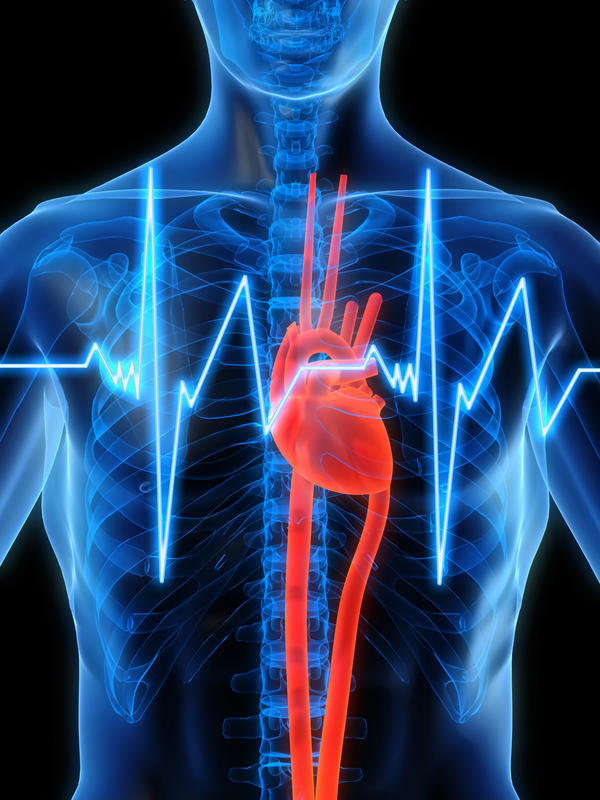When the heart is unable to pump blood adequately to meet the demand of the body, it is referred to as heart failure. It affects all the body functions since their requirement of blood is not met. Various conditions collectively cause heart failure and also cause the weakening of the heart. The right or left side of the heart can be affected by heart failure, or sometimes both. It is a chronic condition in any case. We will look at what is right sided heart failure here.
What Is Right Sided Heart Failure?
The heart is unable to pump blood properly to the lungs in right sided heart failure. This usually happens in most people because of some problem with the left ventricle. However, it can also be caused by reduced functioning of the right ventricle.

Symptoms of Right Sided Heart Failure
Physical examination of a person suffering from right sided heart failure will reveal peripheral edema, liver enlargement and ascites. The fluid status is checked by jugular venous pressure, which usually gets accentuated by the hepatojugular reflux. If there is an increase in the right ventricular pressure, there will be presence of parasternal heave.
Congestion of systemic capillaries occurs when there is backward failure of the right ventricle. As a result, there will be peripheral edema, swelling in foot and ankle in people who are mostly standing and sacral edema in people who are lying down. It can also cause nocturia, when the body fluid returns to the blood stream after lying down.
Ascites will be caused in severe cases, which will further lead to liver enlargement and impaired liver functioning. Other symptoms are jaundice and coagulopathy.
What Causes Right Sided Heart Failure?
The most common cause is left sided heart failure, which can be either systolic or diastolic. Other causes can include lung disease which can affect the function of the right ventricle, even when the left ventricle is functioning fine.
- Left Sided Heart Failure: In this scenario, since the left ventricle is not pumping properly, the blood flows back up in the left atrium, then to the lungs and thus eventually puts pressure on right ventricle. This causes the right ventricle to fail, causing blood back up in various organs like the liver, extremities, etc.
- Chronic Lung Disease: Chronic lung diseases like emphysema or pulmonary embolism causes high blood pressure in the pulmonary arteries which thus increases the workload on the right ventricle. In the long run, this excess pressure causes the right ventricle to fail.
- Coronary Artery Disease: This condition usually causes left sided heart failure which in turn leads to right sided heart failure. It can also be caused when the blood supply to the right ventricle is blocked.
- Pulmonary Stenosis: This is similar to chronic lung disease, where there is increased workload on the right ventricle, causing it to fail.
- Tricuspid Stenosis: Due to the narrowing of the tricuspid valve, the blood flow from the right atrium is restricted. This causes it to get enlarged and thus there is back-up flow of blood in the atrium, causing right sided heart failure.
- Pericardial Constriction: When the pericardium gets thickened, the heart is unable to pump blood effectively. This can lead to failure of the right side of the heart.
- Left to Right Shunt: In this condition, there is an abnormal connection present between the right and left side of heart, which causes overload of blood in the right ventricle. It is similar to tricuspid regurgitation.
How to Treat Right Sided Heart Failure
For a person suffering from this kind of heart failure, periodic monitoring by a doctor is essential. In most cases, treatment of left sided heart failure is required. The other treatment options are given below:
1. Lifestyle Changes
The person should restrict intake of salt. If a person is overweight, they should lose weight. Intake of alcohol should be stopped and smoking should also be given up.
2. Medications
Various medications are given for this condition. Diuretics are given to reduce fluid accumulation. Bumetanide and furosemide can help in moderate or severe symptoms, while Hydrochlorothiazide, chlorthalidone and chlorothiazide help in mild symptoms. ACE inhibitors, long acting nitrates, and ARBs (angiotensin receptor blockers) are drugs which reduce the workload of the heart and thus are helpful for very sick patients. Beta blockers and Digitalis are two other medications which are very helpful for heart failure patients.
3. Implanted Devices
A biventricular pacemaker or CRT (cardiac resynchronization therapy) will help in contraction of both ventricles at the same time. An ICD (implantable cardioverter-defibrillator) can also be used in some patients. These can also be used together as in a single device that is known as biventricular pacemaker-ICD.
4. Transplant
When all the above mentioned treatment measures do not work, a transplant will be required.
